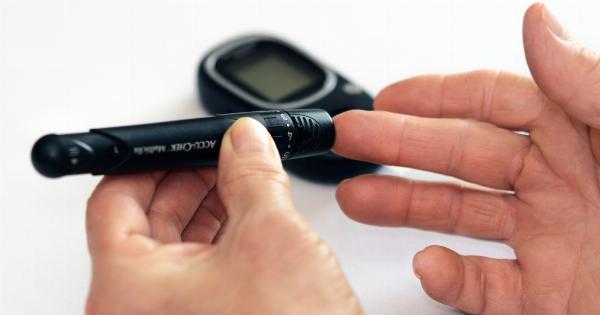Diabetes mellitus, commonly referred to as diabetes, is a chronic metabolic disorder characterized by high blood sugar levels. It is a condition that affects millions of people worldwide, and its prevalence is increasing at an alarming rate.
Diabetes can have potentially serious health consequences if left untreated or unmanaged. However, several lifestyle modifications, including regular exercise and movement, can play a significant role in relieving the symptoms and managing this condition effectively.
Understanding Diabetes Mellitus
Diabetes mellitus is a condition that occurs when the pancreas fails to produce enough insulin or when the body is unable to effectively use the insulin it produces. Insulin is a hormone responsible for regulating blood sugar levels.
There are primarily two types of diabetes: type 1 and type 2.
Type 1 Diabetes
Type 1 diabetes is an autoimmune condition in which the immune system mistakenly attacks and destroys the insulin-producing cells in the pancreas.
This results in little to no insulin production, requiring individuals with type 1 diabetes to rely on insulin injections or an insulin pump to control their blood sugar levels.
Type 2 Diabetes
Type 2 diabetes is the most common form of diabetes, accounting for approximately 90% of all cases. It occurs when the body becomes resistant to the effects of insulin or doesn’t produce enough insulin to maintain normal blood sugar levels.
The Role of Exercise in Diabetes Management
Regular exercise and physical activity have been shown to have numerous benefits for individuals with diabetes. Exercise can improve insulin sensitivity, meaning the body can use insulin more effectively to lower blood sugar levels.
It also promotes weight loss or maintenance, reduces the risk of cardiovascular complications, and improves overall well-being.
Exercise Recommendations for Individuals with Diabetes
While exercise is beneficial for everyone, individuals with diabetes should consider certain factors before starting an exercise routine:.
1. Consultation with Healthcare Provider
Prior to starting any exercise program, individuals with diabetes should consult their healthcare provider.
They can provide guidance on the most suitable types and intensity of exercise based on the individual’s overall health status, complications, and current medications.
2. Choosing the Right Type of Exercise
There are various forms of exercise that individuals with diabetes can engage in, including aerobic activities, strength training, flexibility exercises, and balance training. Each type has its unique benefits and considerations.
Aerobic exercises like walking, cycling, swimming, and dancing are particularly effective in improving cardiovascular health and lowering blood sugar levels.
3. Monitoring Blood Sugar Levels
Individuals with diabetes must monitor their blood sugar levels before, during, and after exercise, especially if taking insulin or certain medications that can affect blood sugar levels.
This monitoring helps in determining if any adjustments to medication or diet are necessary to prevent hypoglycemia (low blood sugar) or hyperglycemia (high blood sugar).
4. Gradual Progression
Starting slowly and gradually increasing the intensity and duration of exercise is crucial, especially for individuals who have been inactive or have other medical conditions.
This approach helps the body adapt to physical activity and reduce the risk of injuries.
5. Incorporating Strength Training
In addition to aerobic exercises, individuals with diabetes should include strength training activities at least twice a week. Strength training can help increase muscle mass, improve insulin sensitivity, and enhance overall metabolic health.
Managing Blood Sugar During Exercise
During exercise, blood sugar levels can fluctuate, and it is important to manage them effectively. Here are some tips for managing blood sugar during exercise:.
1. Regular Monitoring
Regularly monitor blood sugar levels before, during, and after exercise to ensure they are within the target range. This allows for prompt action if levels become too high or too low.
2. Stay Hydrated
Drink plenty of water before, during, and after exercise to stay properly hydrated. Dehydration can affect blood sugar levels and overall exercise performance.
3. Carbohydrate Intake
Consider adjusting carbohydrate intake before and during exercise to provide the body with enough fuel. This may involve consuming a small snack or adjusting the quantity and timing of meals.
4. Carry Emergency Snacks
Always have a fast-acting carbohydrate source, such as glucose tablets or fruit juice, readily available during exercise to treat hypoglycemia.
5. Wear Identification
Individuals with diabetes should wear identification indicating their condition during exercise, such as a medical alert bracelet or necklace. This can be essential in case of emergencies, where others need to be aware of their condition.
Conclusion
Exercise and movement play a crucial role in the management and relief of diabetes mellitus. Regular physical activity improves insulin sensitivity, aids in weight management, reduces the risk of complications, and enhances overall well-being.
However, it is important for individuals with diabetes to consult their healthcare provider, monitor their blood sugar levels, and take necessary precautions to ensure safe and effective exercise. By incorporating exercise into their routine and leading an active lifestyle, individuals with diabetes can significantly improve their quality of life and effectively manage their condition.





























